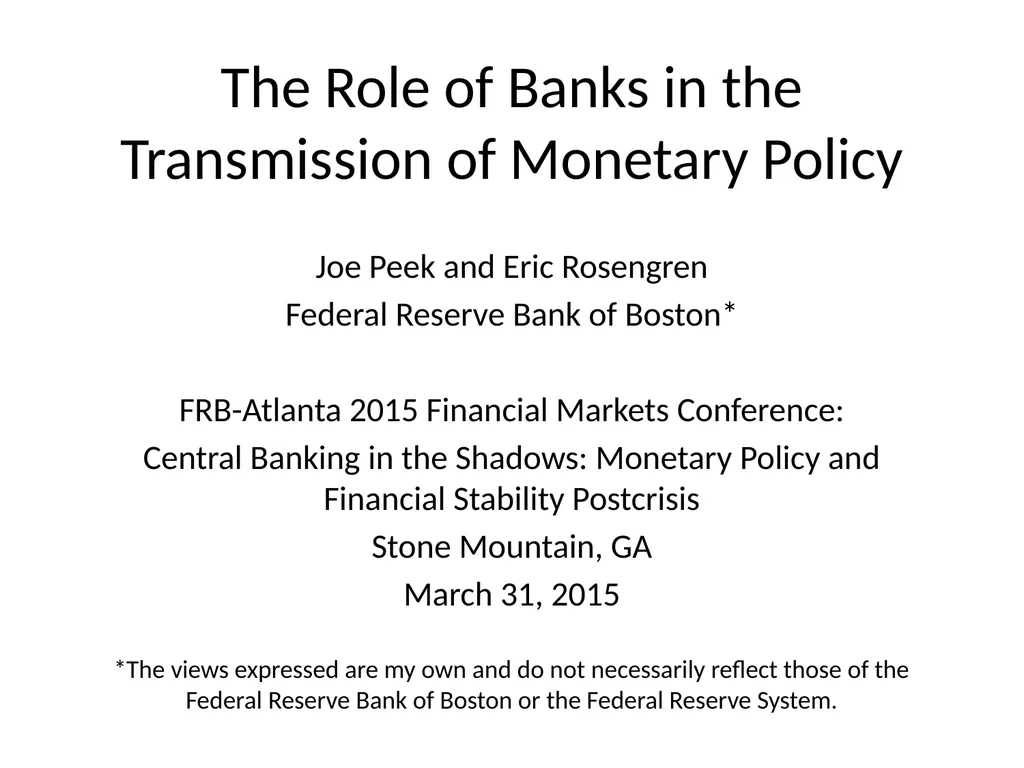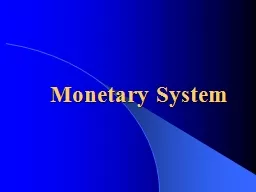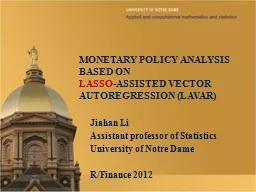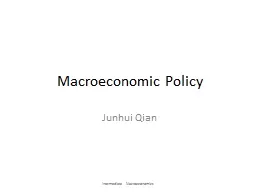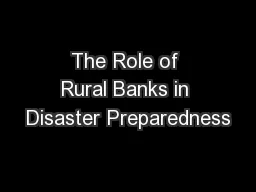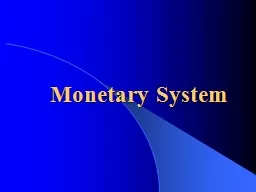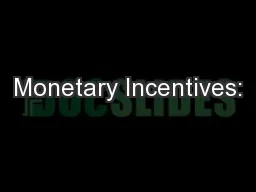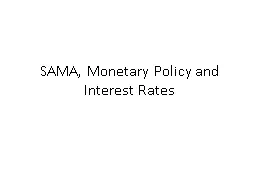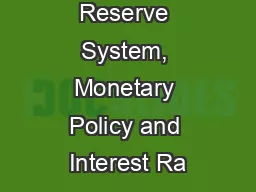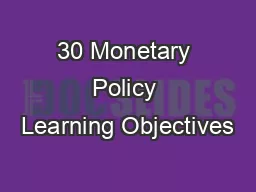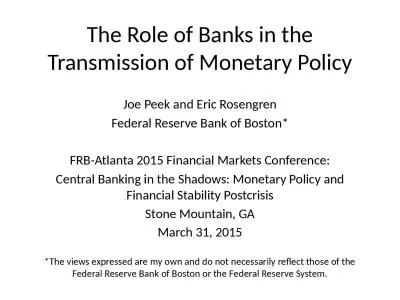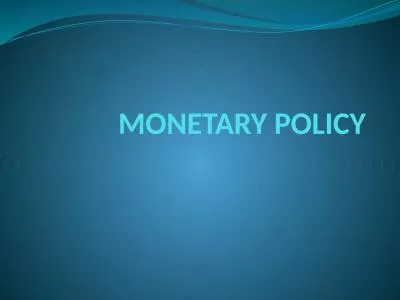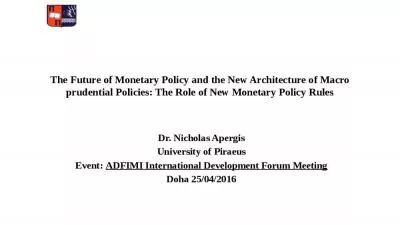The Role of Banks in the Transmission of Monetary
Author : min-jolicoeur | Published Date : 2025-06-23
Description: The Role of Banks in the Transmission of Monetary Policy Joe Peek and Eric Rosengren Federal Reserve Bank of Boston FRBAtlanta 2015 Financial Markets Conference Central Banking in the Shadows Monetary Policy and Financial Stability
Presentation Embed Code
Download Presentation
Download
Presentation The PPT/PDF document
"The Role of Banks in the Transmission of Monetary" is the property of its rightful owner.
Permission is granted to download and print the materials on this website for personal, non-commercial use only,
and to display it on your personal computer provided you do not modify the materials and that you retain all
copyright notices contained in the materials. By downloading content from our website, you accept the terms of
this agreement.
Transcript:The Role of Banks in the Transmission of Monetary:
The Role of Banks in the Transmission of Monetary Policy Joe Peek and Eric Rosengren Federal Reserve Bank of Boston* FRB-Atlanta 2015 Financial Markets Conference: Central Banking in the Shadows: Monetary Policy and Financial Stability Postcrisis Stone Mountain, GA March 31, 2015 *The views expressed are my own and do not necessarily reflect those of the Federal Reserve Bank of Boston or the Federal Reserve System. Monetary Policy Transmission Noncontroversial: The interest rate channel of the transmission of monetary policy More controversial: Is the interest rate channel augmented, and if so, precisely how? Two primary mechanisms that have received substantial attention: The broad credit channel The bank lending channel The Credibility of Credit Channels Over time, we have observed an increased emphasis on the asset side of bank balance sheets The broad credit channel has achieved widespread acceptance However, the narrower bank lending channel has remained somewhat controversial Haters Gonna Hate Even so, skepticism about the bank lending channel has eroded through time Increasing recognition of the importance of bank loan supply Chairman Greenspan’s references to “headwinds” to monetary policy, an indirect reference to credit availability problems Concerns about a bank “capital crunch” in the U.S. in the early 1990s Many policies implemented during the financial crisis were intended to alleviate credit crunches: TARP The initial stress test that required raising capital ratios through increased capital, not shrinking assets Lending facilities designed to mitigate a possible bank credit crunch Basel III capital conservation buffer Traditional Interest Rate Channel Focuses on the liability side of bank balance sheets To tighten monetary policy, open market operations raise the federal funds rate and shrink reserves in the banking system If the reserve requirement is binding, banks must shrink reservable (transactions) deposits Banks raise interest rates on non-transactions deposits to replace lost transactions deposits Interest rates on non-deposit alternatives also rise, and increases in short-term rates are transmitted to longer-term interest rates Aggregate demand declines Note: Today, this traditional story is complicated by the large volume of excess reserves in the banking system. Broad Credit Channel Also known as the balance sheet effect or the financial accelerator Based on credit market frictions associated with asymmetric information and moral hazard that make external finance an imperfect substitute for a firm’s internal funds Does not require a distinction among alternative sources of credit A tightening of monetary policy increases interest rates, causing a deterioration in firm
